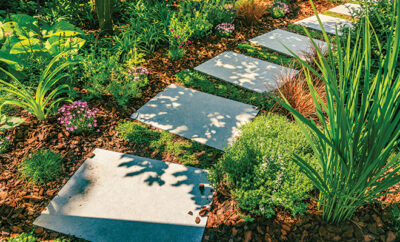
Go Green in 2016: Tips for a More Eco-Friendly Home
Environmental responsibility has quickly become part of the zeitgeist in recent years, but many people still struggle to find ways to incorporate it into their lives. “Going green” is a phrase many still associate with living off the land, spending tens of thousands of dollars on a new Prius or other extremes. While those are ways to dramatically reduce your carbon footprint, making smaller changes around the home will still make a significant difference, and they don’t require a complete overhaul of your way of life. Consider implementing these ideas in your home for a more eco-friendly abode.
CFLs
If you haven’t jumped on the CFL bandwagon yet, it’s definitely time to do so. Compact fluorescent lightbulbs save energy by converting most of it into light, rather than heat, like their incandescent lightbulb counterparts. They last up to ten times longer and use up to 75 percent less energy, according to Better Homes and Gardens, which isn’t just good for the environment; it’s good for your wallet, too. You’ve got to replace your light bulbs anyway, so when that time comes, choose CFLs for a quick way to green up your home.
Himalayan Salt Crystals
Ditch the electric air purifier and invest in Himalayan salt crystals, which naturally clean the air of pollen and bacteria. They are also commonly used to eliminate odors and are much more environmentally safe than aerosol sprays or synthetic chemical air fresheners. They are incredibly versatile and can be kept in the home in decorative containers or turned into lamps with candles or light bulbs inside. Blocks of Himalayan salt can be used as cooking surfaces and serving dishes.
Composting
According to the Environmental Protection Agency, food scraps and yard waste account for 20 percent to 30 percent of what we throw away. Instead of throwing everything into the garbage, take a couple of extra minutes to sort your trash and turn some of it into compost. Create a composting container, commonly kept outside in the yard, and turn it into soil fertilizer instead of sending it to the landfill, where it will contribute to the greenhouse gas problem.
The EPA recommends that your compost pile contain equal amounts of brown and green material. Brown material includes dead leaves and twigs; green material can be fruit and vegetable scraps, coffee grounds, grass clippings and more. Keeping this relative balance is important, as each material provides a different element essential to composting; brown materials provide carbon, and green materials provide nitrogen. A generous amount of water is the last essential ingredient to your compost pile, as moisture is important for the materials to continue to break down.
If you don’t have a yard to place your compost pile in, you can purchase a compost container for indoor use at a hardware store or create your own. If composting is done correctly, there should not be an odor and it should not attract pests, so there’s no reason you can’t keep it indoors!
Green Clean
Switching out your go-to household cleaners for the green versions is another way to reduce harm to the environment that doesn’t take much effort. Plant-based cleaning products have become ubiquitous in recent years as consumers grow more aware of their environmental footprint, so you can find them at most of the same stores you’d find your old products.
In the same vein, shop for products that are fragrance free or scented with essential oils. Perfumed products often contain chemicals that can be harmful to the environment when washed down the drain.
Eat Green
The smallest changes in food considerations can make a huge impact on the environment. Start with taking a vow of vegetarianism one day each week. According to Real Simple, this one change can have the same impact as choosing to drive a hybrid car, because of the amount of greenhouse gases produced by livestock.
When you do choose to eat meat, spend a few extra dollars on sustainably raised meats, which come from farms that use more environmentally responsible policies than factory farms. This generally means that the animal was pasture raised, was fed natural and healthy food, and was not treated with hormones or antibiotics.
Finally, shop for produce and other groceries at your local farmers’ market whenever possible. Not only is the food more fresh and better-tasting, it reduces pollution because the food didn’t have to travel as far as the mass-produced name brands, so less fossil fuel was burned.
The smallest changes can have a huge impact on the environment. Often, all it takes is some consideration of your consuming habits and swapping out your old way of doing things with a more environmentally friendly one. Our eco-conscious culture has already discovered countless creative ways to go green; it’s just a matter of finding the ones that apply to you!. HLM
Sources: bhg.com, epa.gov, livestrong.com and realsimple.com.







